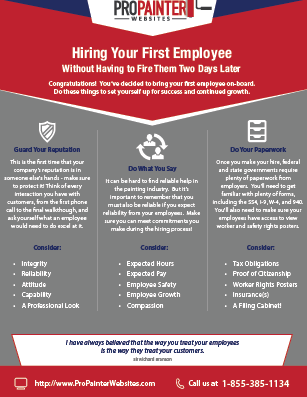Factors To Take Into Consideration For Industrial Exterior Paint By Period: Essential Info You Should Have
Factors To Take Into Consideration For Industrial Exterior Paint By Period: Essential Info You Should Have
Blog Article
Article By-Korsholm Chaney
When you're preparing an industrial outside paint task, seasonal factors can make or damage your outcomes. You'll intend to think about how temperature level and moisture influence paint application and drying times. Selecting home painters can ensure your paint adheres effectively and lasts longer. But which seasons are really the best for this type of job? Allow's discover the key elements that can influence your project's success.
The Effect of Temperature on Paint Application
When you're preparing an industrial external paint project, the temperature level can substantially influence just how well the paint sticks and dries.
Ideally, you want to repaint when temperatures vary between 50 ° F and 85 ° F. If https://news.artnet.com/market/keith-haring-radiant-baby-childhood-home-auction-2163953 's too cold, the paint may not cure effectively, bring about issues like peeling off or breaking.
On the flip side, if it's too warm, the paint can dry out too rapidly, protecting against proper adhesion and causing an irregular surface.
You should also consider the moment of day; morning or late afternoon provides cooler temperatures, which can be a lot more favorable.
Always check the producer's suggestions for the particular paint you're making use of, as they commonly offer assistance on the ideal temperature level variety for optimum outcomes.
Humidity and Its Impact on Drying Times
Temperature level isn't the only ecological element that affects your industrial external paint project; humidity plays a substantial function too. High moisture degrees can slow down drying out times drastically, impacting the total high quality of your paint work.
When the air is saturated with dampness, the paint takes longer to treat, which can lead to issues like inadequate adhesion and a greater risk of mold development. If you're painting on a particularly damp day, be gotten ready for extensive wait times between coats.
It's essential to monitor neighborhood climate condition and strategy appropriately. Ideally, go for moisture levels in between 40% and 70% for optimum drying out.
Keeping these factors in mind ensures your project stays on track and provides a long-term coating.
Best Seasons for Commercial Outside Paint Projects
What's the most effective time of year for your business exterior painting projects?
Spring and early fall are normally your best choices. Throughout these seasons, temperature levels are light, and moisture levels are commonly reduced, creating ideal problems for paint application and drying out.
Stay clear of summertime's intense heat, which can cause paint to completely dry too quickly, leading to poor bond and coating. Likewise, winter months's cold temperatures can hinder proper drying out and treating, risking the long life of your paint task.
Aim for days with temperature levels in between 50 ° F and 85 ° F for ideal results. Bear in mind to examine the regional weather forecast for rainfall, as wet problems can spoil your task.
Planning around these variables guarantees your paint task runs efficiently and lasts much longer.
Conclusion
In conclusion, preparing your commercial exterior paint jobs around seasonal factors to consider can make a considerable difference in the result. By organizing job during the optimal temperatures and humidity levels, you'll make sure much better attachment and drying times. Bear in mind to keep an eye on regional weather report and choose the correct time of year-- springtime and very early autumn are your best choices. Taking these steps will certainly assist you attain a durable and expert finish that lasts.
